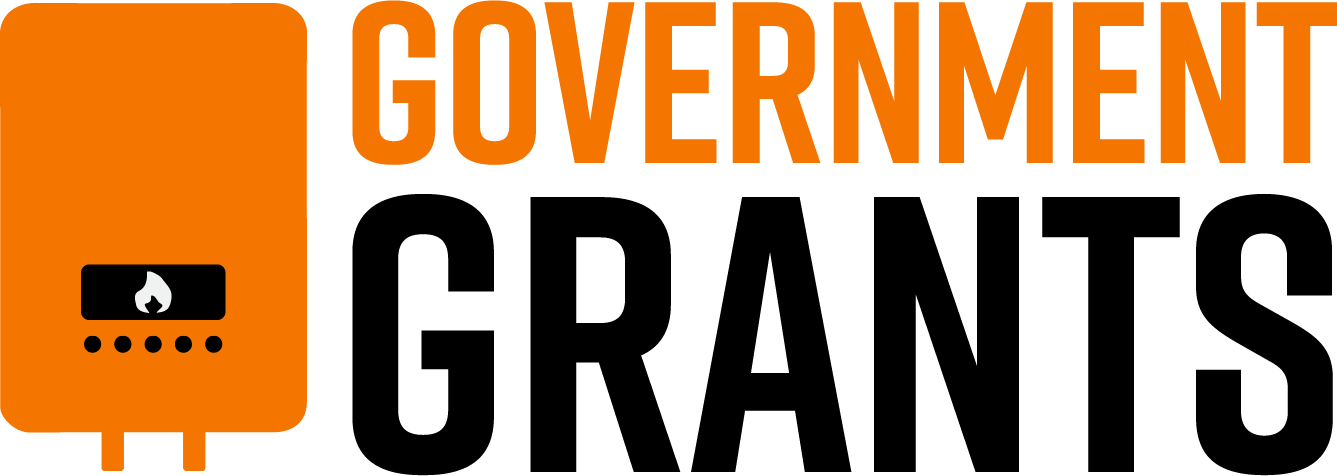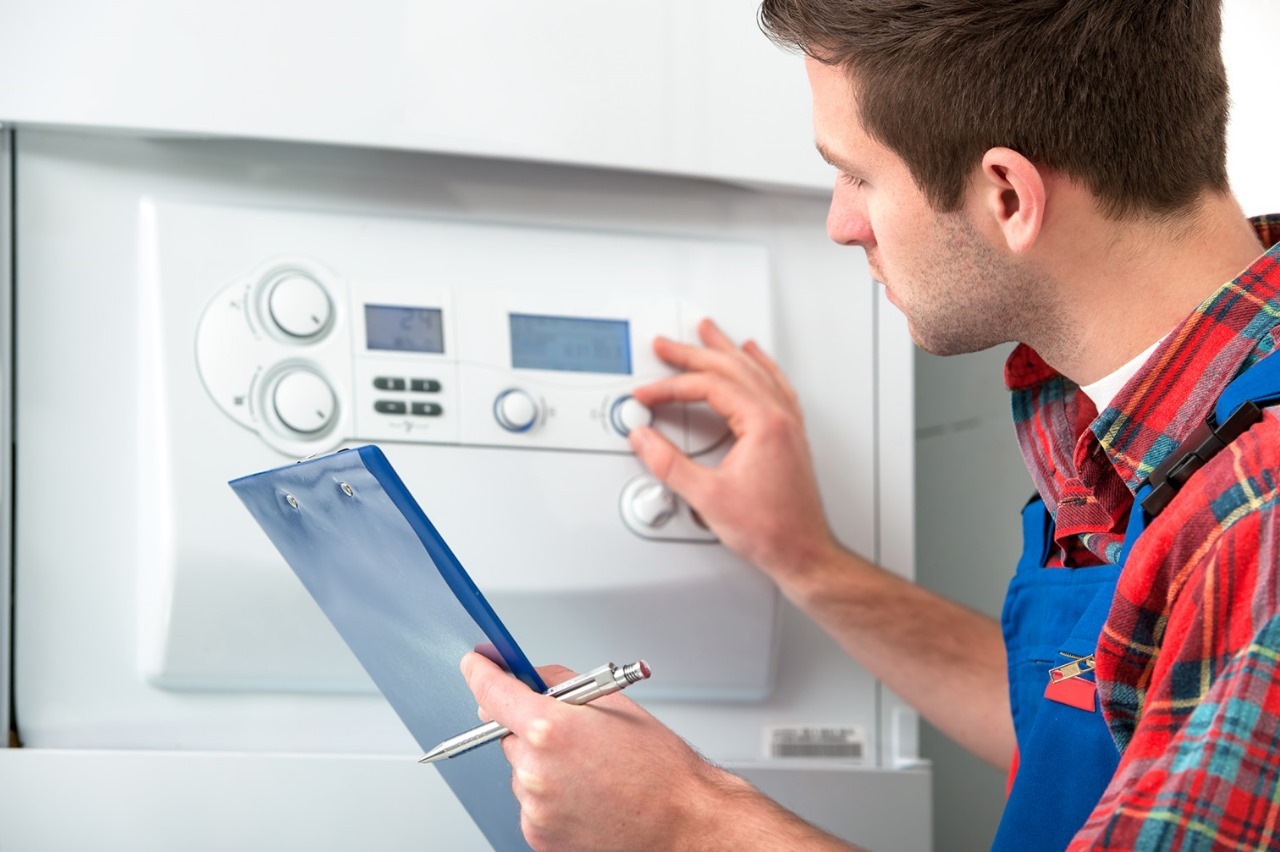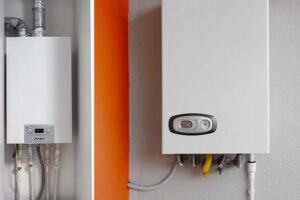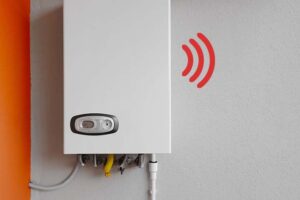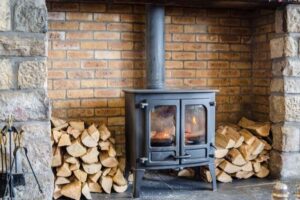If your boiler isn’t acting the way it should, then chances are, it has to do with the boiler pressure. No need to sweat, though – the process is relatively straightforward. The pressure is kind of like the heartbeat of the heating system.
If it becomes too high or too low, that might be when your boiler could struggle to heat your home or provide you with hot water when needed.
Here’s a how-to guide for you that answers everything you should know about boiler pressure – what it is, why it matters, and when to increase or decrease boiler pressure.
Whether you are a homeowner or a landlord, learning how to work with boiler pressure will become quite handy.
This way, you can stay away from breakdowns, save some money, and have your central heating system up and running. You will learn how to repressurise the boiler, what causes high boiler pressure, and what causes low boiler pressure.
What is Boiler Pressure?
Boiler pressure refers to the pressure of the water that circulates within your heating system. Think of it, if you will, as the “push” that keeps hot water current in the radiators, taps, and pipes.
Most boilers have their gauges with which one can check on the front of the boiler. In general, this is a small dial that will tell you whether your pressure is low, too much, or just right.
Therefore, this is the reason why the ideal boiler pressure of most homes would ideally revolve around a pressure range from 1 to 2 bars.
It is an ample force that keeps your heating system in good working order, hence does not result in any air locks but will also protect your valves and delicate pumps.
In the case of a commercial boiler, the pressure can increase, and hence it ranges between 2 to 3 bars. Please confirm from the installation manual for adequate clarification.
How to Check the Pressure of the Boiler?
It will take only a minute or so to check your boiler’s pressure. Therefore, have a look at the pressure gauge on your boiler; it could be either some kind of physical dial or a digital display, depending on the model you have.
The pressure of the boiler is between 1.0 and 1.5 bar when the heating is turned off. If lower, then your system may need to be repressurised.
A sudden loss of pressure could suggest there is a leak, so have a good look around your boiler and your pipework for water. Just remember to contact a gas-safe engineer should you locate one.
If your boiler pressure becomes too high, then this is not usually a problem when the heating is on, but if it continuously stays high, then you might have a problem with your system, such as possibly a faulty filling loop or an overfilled expansion vessel.
What is the Ideal Boiler Pressure?
For most homes, the ideal boiler pressure would be in the range of 1.0 to 2.0 bar. When the heating is on, it may creep a little bit up, but when it starts getting too high and goes into the red zone, you’ll probably need to make some adjustments.
Why is the Ideal Boiler Pressure Important?
Maintaining the correct boiler pressure ensures:
- Efficiency: The heating system works very well, using the energy efficiently in order to save you money.
- Safety: It saves one from leaks or failure of the boiler to even becoming a safety hazard.
- Functionality: It distributes evenly the heat around your house.
- Longevity: Helps in keeping the boiler in proper shape and condition to avoid too much wear and tear.
Neglecting boiler pressure can lead to inefficient heating or costly repairs down the line.
How to Repressurise a Boiler?
If your home is not heating properly or your hot water is not running as it should, it may be due to low boiler pressure. Often, you can repressurise it yourself without needing a heating engineer.
Low pressure is often caused by water leaks or bleeding radiators. Here’s a quick guide to get you started:
General Steps to Repressurise Your Boiler
- Turn off the boiler and allow it to cool completely.
- Find the filling loop – a silver pipe connecting your boiler to the mains water. It should have a valve at each end.
- First, check for leaks. Call a Gas-safe engineer if you see water escaping.
- Open the valves – rotate the isolation valve anti-clockwise, and then the handle valve to let in water.
- Watch the pressure gauge. When it has attained the desired value, which usually falls in the range of 1.0 to 1.5 bar, return the valves to their original positions to shut off.
- Turn the boiler back on and test everything.
If you’re unsure, the boiler manual should have instructions according to your model.
Repressurising Various Kinds of Boilers
There are different ways to top up pressure in different designs of boilers. Here is how to do it for each:
Repressurising Boiler with Filling Loop
- Attach the hose to both valves – one from mains and one from the heating system.
- First, open the cold water tap, then the second.
- Observe the pressure gauge and stop as soon as the level is just greater than 1 bar.
- Close both taps and remove the hose. Some water may drip out, so be careful.
Repressurise a Boiler without a Filling Loop
Some older boilers, especially older combi models, don’t have a filling loop. Rather, they utilise a filling key. Now, pay attention to this:
- Turn off the heating boiler and let it cool.
- Put in the key to the filling slot and unlock.
- Turn the valve next to the key to allow water in – use a spanner or wrench if necessary.
- Observe the gauge and stop when it reaches the correct pressure.
- Close the valve securely and turn the boiler back on.
Repressurising Keyless Internal Filling Loop Boiler
- Look for a blue lever located at the bottom of the boiler.
- Pull the lever down and let the water in.
- Let it go when the pressure gauge reaches just over 1 bar.
How to Increase Boiler Pressure?
If the pressure in your boiler has dropped and you are not getting adequate heat or hot water, then it is time to top it up. Fortunately, increasing boiler pressure is pretty easy and doesn’t require any professional help. Here’s how:
- Check the Boiler Manual: Refer to the specific instructions for your model as you begin.
- Turn the Boiler Off: Allow the system to cool down completely for safety.
- Filling Loop Position: Locate the flexible, silver pipe under your boiler. Ensure it’s attached at each end.
- Open Valves: Now open the valves in a clockwise direction along the filling loop slowly allowing the inflow of water to go into the system.
- Pressure Gauge Monitoring: Switch on the gauge, observing while the pressure builds up. Stop when it reaches a bar between 1 and 1.5.
- Close the Valves: Turn the valves back to their original position to stop the water flow.
- Switch the Boiler On: Ensure that it works fine and the warmth of your home returns.
If the pressure is still falling and you are unsure, there is probably a leak. In such cases, you should call a professional.
How to Reduce Boiler Pressure?
If your boiler pressure is too high, you will hear weird noises, or the radiators could stop heating as they are expected to. Extreme cases may lead to leakage or damage of the system due to the increased pressure. In an ideal setting, the pressure should be between 1.0 and 2.0 bar when the system is cold.
Here’s how to lower it safely:
1. Open the Filter Valve
- Many central heating appliances have some form of filter located close to the heating boiler.
- Place a bucket below the valve, then open the valve, releasing water out until the reading of the gauge reaches approximately 1 bar.
- Close the valve after reaching the desired pressure.
2. Use a Drain-off Valve
- Look for a Y-shaped or T-shaped valve in the central heating pipework; this is usually downstairs.
- Place a container under the valve, open it, and let the water flow until the pressure drops to 1 bar.
- Close the valve tightly afterward.
3. Bleed the Radiator
- Pressure can also be lowered by radiator bleeding.
- The process will involve opening the bleed valve by using a radiator key slowly until water drops and comes out at the correct pressure.
- It is slower, but it works in case you do not have access to a filter or drain-off valve.
4. Loosen a Radiator Nut (for Advanced Do-It-Yourselfers Only)
- Put a container in the nut below the radiator joint with the pipework.
- Loosen the nut gently to allow water to drain out. Prepare for a quicker flow and tighten the nut as soon as the pressure is released.
High Boiler Pressure
As your boiler heats water, pressure starts to build up naturally. A slight increase is normal, but if it gets too high, it can cause problems. So, what’s considered too high? If your pressure is above 2.5 bar, it’s too high and could trigger safety shutdowns.
Signs Your Boiler Pressure Is Too High
Here’s how to determine whether the pressure of your boiler is too high:
- The pressure gauge has gone red.
- Your central heating is not working.
- The filling valves are open or not screwed tightly.
- Water is leaking from the safety discharge pipe outside your boiler.
Why Is My Boiler Pressure Too High?
In the heating system, the perfect balance of air, water, and space for expansion is required to function. If there is not enough air in the vessel, the pressure of the build-up may be too much.
Most Common Causes of High Boiler Pressure
Here’s why it might happen:
- Overfilled System: When the filling loop allows excessive water in, it can overfill the system.
- Repressurising Mistakes: If you’ve recently increased pressure, it may now be too high.
- Faulty Pressure Relief Valve (PRV): The PRV might not be releasing excess pressure, which could be an indication of a failing PRV.
- Clogged Expansion Vessel: The expansion vessel is designed to absorb pressure changes. If it’s clogged or waterlogged, the pressure starts building up.
- Old Boiler Parts: Aged or faulty components can cause pressure to spike.
- Excess Water: Increased water levels in the system cause high pressure.
- Aging Boiler: Your answer is if the boiler is more than 10 years old, the boiler may not work effectively like many years ago.
Low Boiler Pressure
While not as alarming, low boiler pressure can still lead to problems. For example, in winter, you may wake up to a chilly home. That is definitely something that nobody wishes for, and it’s true especially when it starts getting that cold!
Why Is Your Boiler Pressure Low?
Low boiler pressure often indicates that something is a bit amiss. Common causes include:
- Leaks in the System: A leak in your radiator valves or pipework can reduce the pressure because water is leaking out.
- Air Trapped in the System: Sometimes, air gets trapped inside your pipes or radiators as bubbles, which blocks the circulation of water and thereby reduces the pressure.
- Bleeding Radiators: If you have bled the radiators recently, you may have let too much water or air out which could lead to lower pressure.
- Faulty Filling Loop: Perhaps it does not add enough water to the system when the filling loop is faulty.
Signs Your Boiler Pressure is Too Low
It is very easy to spot whether the pressure in your boiler is low or not. Here is what you can look out for:
- No Hot Water: Your boiler struggles to heat water.
- Cold Radiators: Your radiators will not heat up properly.
- Pressure Gauge Reading Below 1 Bar: The pressure gauge has moved into the low zone.
Is Low Boiler Pressure Dangerous?
Low pressure is not dangerous in itself, but it does reduce the efficiency of your boiler. This means that you will be paying more energy bills and still having a cold house.
Moreover, this could lead to more serious issues if left unchecked, such as leaks that could cause water damage.
Does Low Boiler Pressure Affect Hot Water?
Yes, it can. When the pressure in your boiler is low, your boiler might not be able to heat the water to its desired temperature. In that case, you would end up with lukewarm or even cold water.
How to Fix Low Boiler Pressure?
If you notice your boiler pressure is low, here’s what to do:
- Off the boiler. Safety first—let everything cool down.
- Under the boiler, you should find the filling loop that may appear as a flexible silver hose with levers or a key.
- Open up the levers and let water into the system. See the pressure gauge come up to about 1–1.5 bars at which point the system should stop.
- Turn off the valves. Once the pressure returns to normal close the valves tightly.
- Check for leaks. Observe the system for a few hours. If it drops again, then there is a leak in the system which needs professional consideration.
Boiler Pressure by Type
As we all know, boiler pressure is determined by a variety of factors. The type of boiler you have will also play a significant role in determining your ideal pressure limits. For example, combi, standard, and system boilers have different pressure limits. Therefore, knowing what’s ideal for your type will be helpful.
What Pressure Should a Combi Boiler Be?
Usually, the combi boiler pressure must be between 1 to 1.5 bars. Once the pressure dips down to one bar, it shows that there must be a leakage or fault somewhere in your system of water to be checked up on. Then, if the pressure has been too low, you can repressurise your boiler.
What Pressure Should a System Boiler Be?
System boilers have an in-built pressure gauge. In older systems, a dial display is used, whereas modern systems make use of a digital gauge.
Similar to combi boilers, the most efficient pressure for a system boiler working well enough is between 1 and 1.5 bars pressure.
What Pressure Should a Regular Boiler Be?
Regular boilers rarely have a visible pressure gauge or an expansion tank, because they rely on a water tank in the loft to fill the system and vent any expansion.
But if your regular boiler has an independent expansion vessel – usually a big red metal tank – then it will have a pressure gauge on the front of the boiler. The pressure reading should be somewhere between 1 and 1.5 bars.
How to Troubleshoot Common Boiler Pressure Issues
Systematically checking for the following issues can help you identify and resolve the root cause of pressure problems:
1. Pressure Fluctuations
Many other factors may cause a fluctuation in boiler pressure. These include trapped air in the system, a faulty or leaking pressure relief valve, and leakage of water. Bleeding of the system might remove the air that causes this fluctuation.
However, the valve that is now faulty or leaking is not moving anywhere, so you’ll have to decide about further checks and repair on the part of the boiler that had the malfunction.
2. Sudden Drops in Pressure
A sudden drop in pressure is often a sign of water loss, usually from leaks or the need to repressurise after bleeding radiators.
Look for visible leaks and make sure to repressurise your system properly after bleeding the radiators to maintain balanced pressure.
3. Constant High Pressure
High pressure can occur due to a faulty pressure relief valve, a waterlogged expansion vessel, and a fault in filling a loop. Check each portion to find out which part is faulty. For example, if your pressure relief valve is faulty, you may have to replace it.
You may need to drain and repressurise the waterlogged expansion vessel. The filling loop will need to be checked for faults.
The Bottom Line
It is always a must to check your boiler pressure. This ensures that the heating system remains healthy. Be it high or low, pressure has to be acted on promptly before things go out of hand and cause damage to the system.
It’s possible to have everything working perfectly and ensure that your home is warm while keeping the system in great shape.
Frequently Asked Questions
It is prudent to check boiler pressure at least once a month. Regular checking ensures that it stays within the recommended limit, keeping the system in good order.
Pressure in the boiler should be between 1 and 2 bars. Generally, this falls into the green area on the pressure gauge. If it falls into the red area, too high or too low, it could be a sign of trouble.
Indeed, too much and too low pressure can both cause problems with your boiler. High pressure can damage the system, but low pressure can make it fail to heat finely and demand more fuel to complete the task, which means poor heating and inefficiency, so pressure problems should be fixed immediately.
Yes, it’s normal for the pressure to rise slightly when the heating is turned on. Provided that the pressure remains within the green zone, there is no cause for alarm.

